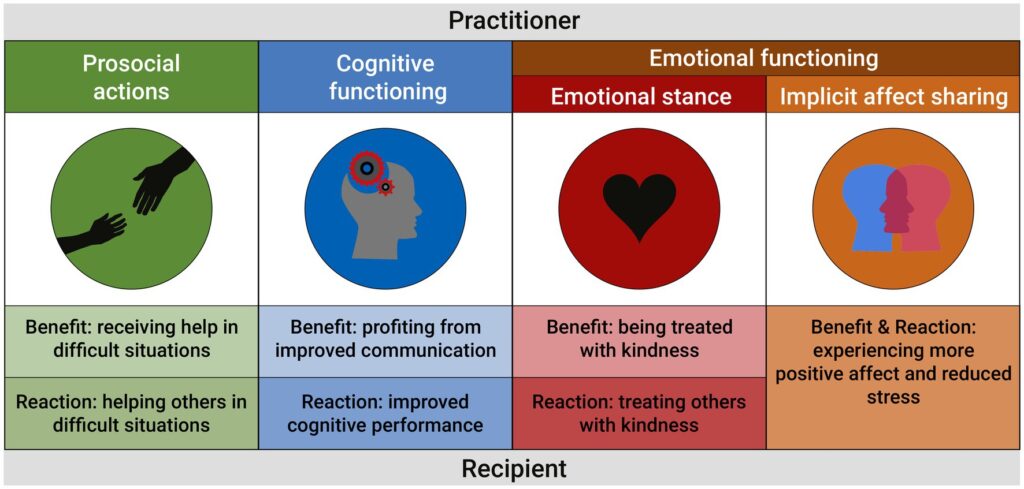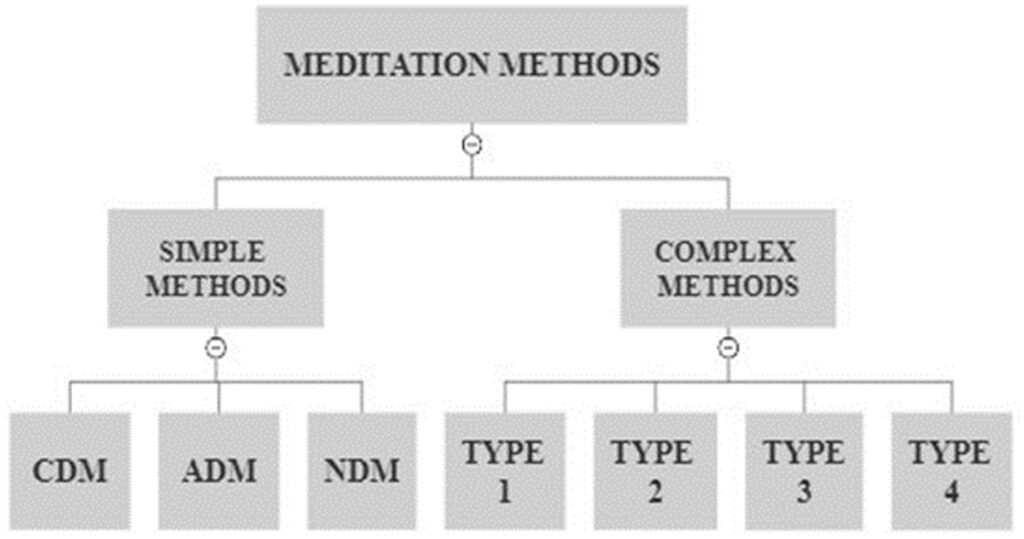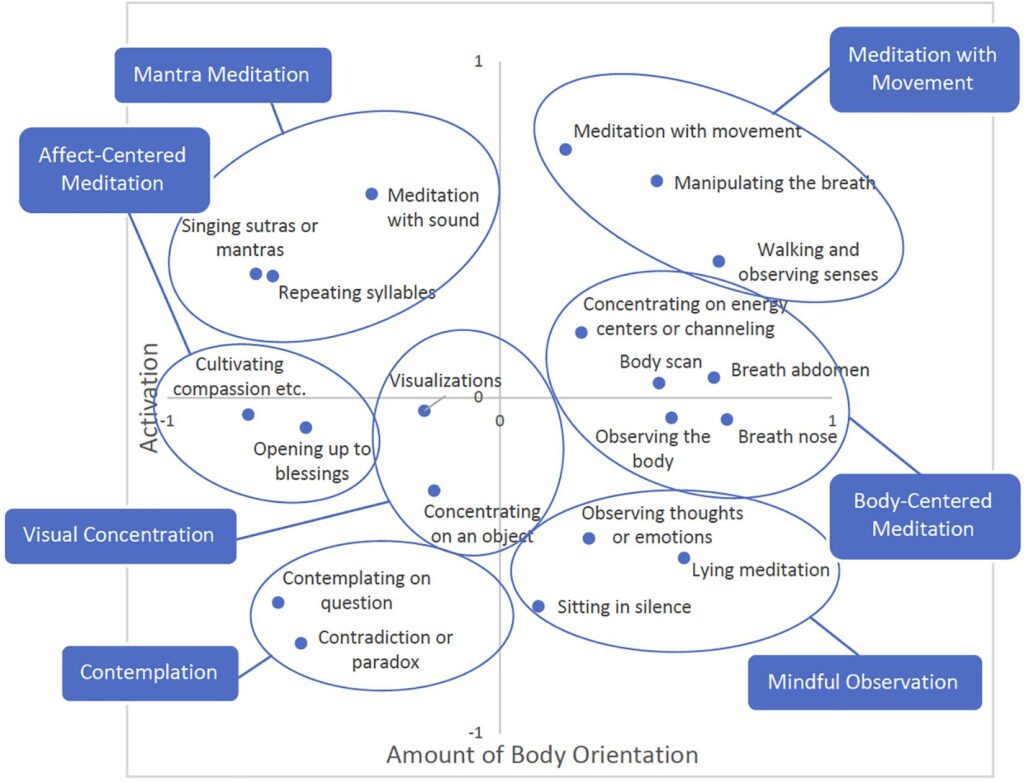
Have you ever struggled to maintain a consistent meditation routine in your busy daily life? It can be challenging to find the time and focus to sit still and practice meditation. But did you know that there are actually different approaches to meditation that can make it easier for you? In this article, we will explore the diversity of meditation and discuss various strategies that can help you establish and maintain a meditation routine.
Meditation is all about learning to be with our current situation as it is, without judgment or attachment. It is not about forcing ourselves to clear our minds or achieve a certain state of bliss. The beauty of meditation lies in the fact that there is no “right” way to do it. You can tailor your practice to suit your needs and preferences. Whether you prefer to visualize specific images or colors, chant to focus your mind, count your breaths for structure, or even practice while lying down, there is a meditation technique that can work for you.
In the upcoming article, we will delve deeper into each of these strategies and learn how they can make meditation a more accessible and enjoyable practice. So stay tuned to discover the different approaches to meditation and find the one that resonates with you.

This image is property of i0.wp.com.
Introduction
Maintaining a consistent meditation routine can be challenging in our busy daily lives. Between work responsibilities, family obligations, and personal commitments, finding the time and motivation for meditation can seem like an uphill battle. However, by understanding meditation as a practice of acceptance and exploring different approaches to meditation, we can overcome these challenges and experience the numerous benefits that meditation has to offer. In this article, we will dive into the diversity of meditation, exploring various techniques that can help you establish and maintain a consistent meditation routine.
Challenges of Maintaining a Consistent Meditation Routine
Daily life distractions
In our modern world filled with technology and constant stimulation, it can be difficult to carve out time for meditation. The constant buzz of notifications, the temptation to scroll through social media, and the never-ending to-do list can all distract us from dedicating time to the stillness and introspection that meditation requires. However, it is important to recognize these distractions and make a conscious effort to create space for meditation in our daily lives.
Lack of motivation
Another challenge that many individuals face when it comes to maintaining a consistent meditation routine is a lack of motivation. It can be hard to sit still and quiet the mind, especially when we are used to always being on the go. Additionally, if we don’t see immediate results from our meditation practice, it can be discouraging and make it difficult to stay committed. However, it is important to approach meditation with patience and perseverance, understanding that its benefits are cumulative and may take time to fully manifest.
Time constraints
Perhaps one of the most common challenges of maintaining a consistent meditation routine is finding the time to meditate. With packed schedules and a seemingly endless list of responsibilities, it can feel impossible to squeeze in a few moments for ourselves. However, it is crucial to prioritize self-care and make meditation a non-negotiable part of our daily routine. Even just a few minutes of meditation each day can make a significant difference in our overall well-being.

This image is property of www.frontiersin.org.
Understanding Meditation as Acceptance
At its core, meditation is about learning to be with our current situation as it is, without judgment or resistance. It is about accepting ourselves and our circumstances, and finding peace and stillness within the present moment. By embracing the concept of acceptance, we can approach meditation with a gentle and compassionate attitude, allowing ourselves to fully experience and observe whatever thoughts, emotions, or sensations arise during our practice.
Different Approaches to Meditation
There is no “right” way to meditate. Meditation is a deeply personal practice, and different techniques work for different individuals. Here are some approaches to meditation that you can explore to find what resonates with you:
Visualization
Visualization involves using the power of imagination to create specific mental images during meditation. This technique can help to focus the mind, enhance concentration, and deepen relaxation. Whether it’s picturing a tranquil beach or envisioning yourself achieving your goals, visualization can be a powerful tool to enhance your meditation practice.
Chanting
Chanting is another approach to meditation that involves using repetitive sounds or mantras to focus the mind. By chanting, we create vibrations throughout the body, calming the mind and allowing us to enter a state of deep relaxation. Whether you choose to chant traditional Sanskrit mantras or simply repeat a word or phrase that holds significance to you, chanting can help to quiet the restless mind and bring about a sense of inner peace and harmony.
Counting
Counting is a technique that provides structure and helps to improve focus and concentration during meditation. One popular counting technique involves counting your breaths from one to ten, and then starting over again. This simple act of counting can bring a sense of rhythm and stability to your meditation practice, allowing you to stay present and centered.
Yoga Nidra
Yoga Nidra, also known as “yogic sleep,” is a lying down meditation technique that promotes deep relaxation and rejuvenation. It involves systematically scanning the body and releasing tension, while maintaining conscious awareness. By practicing Yoga Nidra, you can experience a profound state of relaxation, reduce stress, and restore energy and vitality to both the body and the mind.
Focusing on Sensations
Focusing on sensations in the body is a grounding and mindfulness practice that can help us connect with the present moment. By paying attention to physical sensations such as the feeling of your breath, the warmth of your palms, or the sensation of your feet touching the ground, you can cultivate a greater sense of presence and awareness. This practice can be particularly helpful for those who find it difficult to quiet the mind and prefer a more embodied approach to meditation.
Moving with Meditation
For those who struggle with sitting still, moving with meditation can be a wonderful alternative. Walking meditation, yoga, and tai chi are all practices that combine movement and mindfulness, allowing us to cultivate a deeper connection between the body, mind, and breath. By mindfully engaging in movement, we can bring our attention to the present moment and experience the benefits of meditation in a more dynamic way.

This image is property of www.frontiersin.org.
Visualization: Unlocking the Power of Imagination
Visualization is a technique that harnesses the power of imagination to enhance our meditation practice. By imagining specific images or colors, we can deepen our focus and stimulate our creativity. For example, you can picture yourself in a serene natural setting, such as a peaceful forest or a tranquil beach. Engage all your senses and immerse yourself in the details of this visualization, allowing yourself to feel a sense of calm and tranquility. Alternatively, you can visualize your goals and aspirations, imagining yourself achieving them with ease and confidence. The possibilities are endless, and the key is to find visualizations that resonate with you and bring you a sense of peace and joy.
Using colors in visualization can also be a powerful tool to enhance your focus and concentration during meditation. Different colors have different energetic qualities and can evoke specific emotions and sensations. For example, blue is often associated with calmness and tranquility, while yellow is associated with clarity and focus. Experiment with visualizing different colors during your meditation practice and observe how they affect your state of mind. You may find that certain colors help you feel more centered and present.
The benefits of visualization are vast. It can help to reduce stress and anxiety, enhance creativity and problem-solving skills, improve concentration and focus, and promote a greater sense of well-being. By incorporating visualization into your meditation routine, you can harness the power of your imagination to cultivate a deeper sense of peace and presence.
Chanting: Finding Harmony through Sound
Chanting is a powerful technique that uses sound and vibration to focus the mind and cultivate a sense of harmony within. By repeating a specific sound or mantra, we can quiet the restless mind and enter a state of deep relaxation. Chanting can be done aloud or silently, depending on your personal preference.
As you chant, you create vibrations in your body, stimulating the parasympathetic nervous system and inducing a relaxation response. This can lead to a reduction in stress and anxiety, as well as an overall sense of calmness and well-being. Additionally, chanting can help to improve concentration and focus, as the repetitive nature of the practice allows the mind to become still and centered.
There are various mantras that you can explore for chanting, ranging from traditional Sanskrit mantras to affirmations in your native language. The key is to choose a mantra that resonates with you and holds personal significance. Experiment with different mantras and observe how they make you feel. Allow the vibrations and the sound to wash over you, surrendering to the experience and allowing yourself to be completely present in the moment.

This image is property of images.everydayhealth.com.
Counting: Structuring Meditation Practice
Counting is a simple yet effective technique that can provide structure to your meditation practice. By counting your breaths, you create a rhythm that allows you to stay present and focused. One popular counting technique involves counting from one to ten, and then starting over again.
To practice breath counting, find a comfortable seated position and close your eyes. Begin by taking a deep breath in, counting silently to yourself “one.” As you exhale, count “two.” Continue this pattern, counting up to ten. Once you reach ten, start over at one. If you find your mind wandering or losing count, simply bring your attention back to the breath and begin again at one.
By incorporating counting into your meditation practice, you can improve your ability to stay focused and present. It can also help to quiet the mind and cultivate a sense of inner peace and stillness. Remember to approach counting with a gentle and non-judgmental attitude, understanding that thoughts may arise and distractions may occur. Simply acknowledge them and gently guide your attention back to the breath and the count.
Yoga Nidra: Deep Relaxation and Rejuvenation
Yoga Nidra, also known as “yogic sleep,” is a lying down meditation technique that promotes deep relaxation and rejuvenation. Unlike traditional meditation, which is often done in a seated position, Yoga Nidra is practiced while lying down, allowing the body to completely relax. It involves systematically scanning the body and releasing tension, while maintaining conscious awareness.
To practice Yoga Nidra, find a quiet and comfortable space where you can lie down and won’t be disturbed. Close your eyes and take a few deep breaths to settle into your body. Begin by bringing your awareness to different parts of your body, starting with your toes and slowly working your way up to your head. As you focus on each body part, consciously release any tension or tightness that you may be holding. Allow yourself to fully surrender and let go.
Yoga Nidra is highly effective for stress relief. By systematically relaxing the body and calming the mind, it can help to reduce anxiety and promote a sense of tranquility and well-being. Additionally, Yoga Nidra has been shown to improve sleep quality, boost creativity, and restore energy and vitality. By incorporating this lying down meditation technique into your regular meditation practice, you can experience deep relaxation and rejuvenation on a profound level.

This image is property of www.frontiersin.org.
Focusing on Sensations: Grounding and Mindfulness
Focusing on sensations in the body is a powerful way to ground ourselves in the present moment and cultivate mindfulness. By connecting with the physical sensations that arise during meditation, we can develop a greater sense of self-awareness and presence.
To practice focusing on sensations, find a comfortable seated position and bring your attention to your body. Start by noticing the sensation of your breath as it enters and exits your nostrils. Feel the coolness of the inhale and the warmth of the exhale. Allow your attention to rest on this sensation, fully immersing yourself in the experience of breathing.
After a few moments, expand your awareness to other physical sensations in your body. Notice the feeling of your feet touching the ground, the weight of your body on the chair or cushion, or any tingling or warmth that you may be experiencing. Simply observe these sensations without judgment or analysis, allowing them to come and go.
Focusing on sensations can be particularly helpful for those who find it difficult to quiet the mind and prefer a more embodied approach to meditation. By bringing our attention to the physical sensations in the present moment, we anchor ourselves in the here and now, allowing us to fully experience and appreciate the present moment.
Moving with Meditation
For those who struggle with sitting still, moving with meditation can be a wonderful alternative. Walking meditation, yoga, and tai chi are all practices that combine movement and mindfulness, allowing us to cultivate a deeper connection between the body, mind, and breath.
Walking meditation involves walking slowly and mindfully, paying attention to each step and the sensations that arise in your body. As you walk, bring your attention to the movement of your feet and the feeling of the ground beneath you. Allow any thoughts or distractions to come and go, bringing your attention back to the present moment with each step.
Yoga is another practice that combines movement and meditation. By flowing through a series of postures and coordinating your breath with your movement, you can cultivate a state of focused awareness and deep relaxation. As you move through each pose, bring your attention to the physical sensations in your body, allowing yourself to fully inhabit your practice.
Tai chi is a martial art that combines slow, flowing movements with deep breathing and focused attention. By practicing tai chi, you can cultivate balance, flexibility, and a sense of inner calm. Each movement is done with mindful intention, allowing you to connect with your body and the present moment.
Moving with meditation allows us to experience the benefits of meditation in a more dynamic and embodied way. By engaging both the body and the mind, we can find a sense of stillness and presence that may be elusive during seated meditation.
Conclusion
In conclusion, maintaining a consistent meditation routine can be challenging, but by understanding meditation as a practice of acceptance and exploring different approaches to meditation, we can overcome these challenges and cultivate a deep sense of peace and presence. Whether through visualization, chanting, counting, yoga nidra, focusing on sensations, or moving with meditation, there are countless techniques to choose from. The key is to approach meditation with an open mind and a willingness to explore what works best for you. By dedicating time to meditation and incorporating these practices into your daily life, you can tap into the transformative power of meditation and experience a greater sense of well-being and inner peace. So, go ahead and embark on your meditation journey, and may you find the diversity of meditation a source of joy and inspiration.
